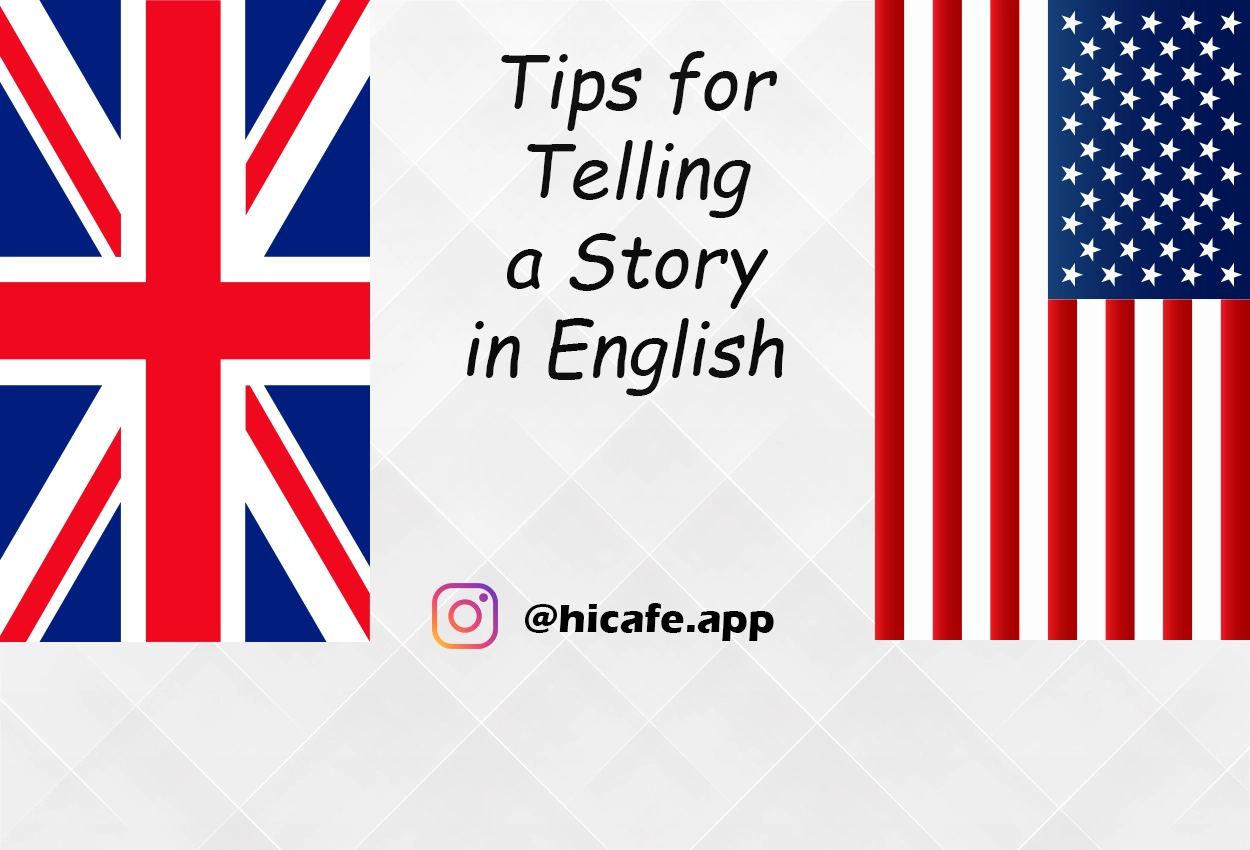
Sharing a story in English is a great way to connect with others and showcase your language skills. Whether you’re telling a funny tale from your travels or a heartwarming memory of a loved one, this lesson will help you on how to tell the story in English. By telling a short story in English you can improve your speaking and get more confidence in articulating ideas in English. Read on to discover tips for starting, structuring, and enriching your narratives.
Previous Conversation Tip Lesson
How to Tell the Story in English
How to start
While “Once upon a time” is common for traditional stories, there are other ways to start if you’re joining a conversation:
- That reminds me!
- Funny you should say that. Did I ever tell you about…
- Hearing your story reminds me of when…
- Something similar happened to me….
How to tell your story
First of all, keep your story brief and use simple grammar so it’s easy to follow.
Make it easy for the listener to understand by using sequencing and linking words:
Sequencing words
These words show the chronological sequence of events.
- First of all, …..
- Secondly, ……
- Previously (before that) …..
- Then…
- Later (on)… .
- But before all that….
- Finally….
Linking words
Linking words serve to connect ideas for the listener by demonstrating reasons, results, contrasting information, additional information, and summarizing.
- I grabbed my umbrella because…
- As a result, I ended up…..
- Although I was tired, I decided to join the dance class.
- I brought snacks for the road trip; besides, I packed a playlist of all our favorite songs.
- In short, the whole adventure turned out to be a wild ride!
Tenses
We can use a variety of tenses to tell stories and anecdotes. Jokes are often in the present tense:
- A programmer walks into a bar and orders a million beers.
We also use the present tense to give a dramatic narrative effect:
- The air is thick with anticipation. The clock strikes midnight. A hush falls over the crowd. The doors of the grand ballroom swing open, and the queen, adorned in shimmering jewels, enters, her smile a beacon of hope.
However, we generally use past forms to talk about past events. If you tell your story in chronological order, you can use the past simple:
- I woke up early, devoured a delicious breakfast, and then raced to the station, barely catching the train by the skin of my teeth. It was a whirlwind morning, but I made it!
Use the past continuous to describe activities in progress at the time of your story, or to describe the background.
- The rain was pouring down in sheets, a relentless torrent, as we huddled together for shelter under a rickety old awning. The wind howled, a symphony of chaos, and we shivered, hoping for a break in the storm.
Instead of telling your story in a straight timeline, you can spice things up by using the past perfect! This lets you talk about things that happened before the main events in your story.
- I finally met my soulmate, a woman I had been dreaming of for years, after she had been mysteriously missing from my life for decades. The reunion was filled with tears of joy and a bittersweet realization that our paths had finally aligned.
Vocabulary
Try to use a wide range of words to make your story more interesting. Instead of using boring words like “nice” or “bad,” use words like “beautiful,” “fabulous,” “wonderful,” “horrible,” “awful,” or “terrible” to make your story really pop! You can even exaggerate a little to make things more exciting!
Remember, we’re not giving a boring speech here – we’re telling a story! Look at your listeners – really connect with them! Use your voice to make them feel like they’re right there in the story, you know? Change your tone, make your face tell the story too! Maybe even practice in front of the mirror a few times before you go live, just to get the hang of it. You got this! Have fun!
Conclusion
So next time you find yourself in a social gathering or a casual conversation, remember the power of storytelling to break the ice and leave a lasting impression. Engage your audience with vivid details, varied vocabulary, and expressive delivery to make your anecdotes come to life. Practice and have fun.
Next Conversation Tip Lesson
Prediction in English Conversation
Related Conversation Lessons
None
Practice Conversation with HiCafe App
By using HiCafe App, you can join free discussion events and Practice English Conversation online or in-person and improve your verbal skills.
All Conversation Lessons
To see and read all of our conversation lessons, you can visit our Improve English Speaking Skills page.


